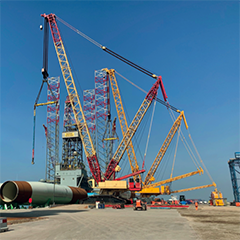Offshore wind structures are exposed to an extremely corrosive environment. As a result, corrosion rates of steel are high, >0.5 mm/year, and coating systems must perform extremely well. Jo van Montfort from Bjond, gives PES his professional viewpoint on some of the pitfalls of the current certification processes and outcomes. This means all stakeholders involved need to increase their level of knowledge in this area.
The most important requirement for a coating system for an offshore wind structure in the leading directive, DNVGL-RP-0416, is as follows: ‘Sufficient attention must be paid to the design life of the structure and the economic aspects of repairing the coating if necessary (and realistic).’ In our opinion this means 25 years maintenance free, because repairing/maintaining a coating system under offshore conditions is undesirable, almost impossible and very expensive (x1000 versus a paintjob onshore).
Therefore, the durability ranges in the latest leading coating standard EN ISO 12944 have been revised. Now a very high (VH) durability range has been included, which means the first maintenance work should not be necessary for 25 years. In the former version and until now this was for 15 years. The question is how to achieve that?
Current situation
In the offshore wind industry, guidelines and standards such as DNVGL-RP-0416 (Lit.4) and EN-ISO 12944 are used as a basis for selecting a coating system. According to the DNVGL-RP-0416 directive, coating systems must be pre-qualified in accordance with recognized standards, e.g. NORSOK M-501, EN ISO 12944, ISO 20340).
In the recently updated EN-ISO 12944 (Lit.3) standard, a new atmospheric corrosivity category is also defined: CX which is more aggressive than the previous C5-M category and applicable for offshore areas with high salinity.



























